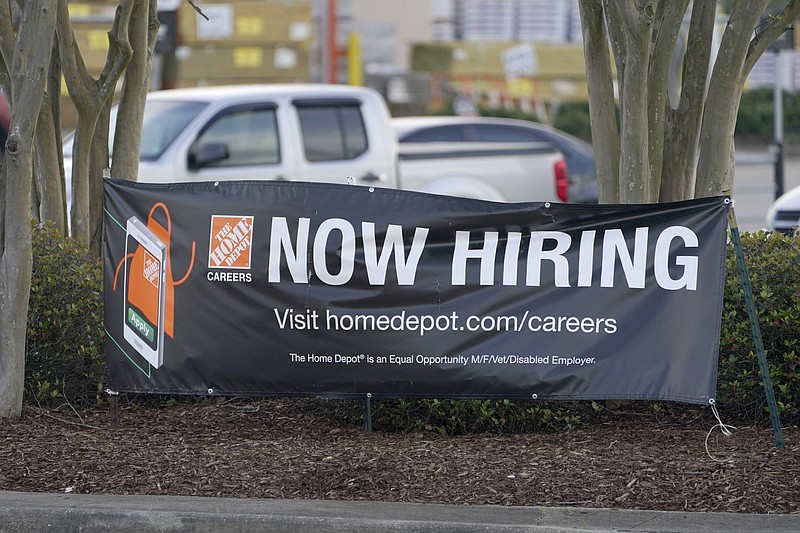New applications for state unemployment insurance unexpectedly rose last week but remained near the lowest levels of the pandemic as the labor market meanders toward full recovery.
Initial jobless claims increased to 719,000 in the week ended March 27, up 61,000 from the week before, Labor Department data showed Thursday.
The increase signaled that many employers are still cutting jobs even as more businesses reopen, vaccines are increasingly administered and federal aid spreads through the economy.
Still, the four-week average of claims, which smooths out week-to-week gyrations, fell by 10,500 to 719,000 -- the fewest since mid-March 2020, just before the pandemic began to cause widespread layoffs.
Though the pace of applications has dropped sharply since early this year, they remain high by historical standards: Before the pandemic flattened the economy a year ago, jobless claims typically ran below 220,000 a week.
All told, 3.8 million people were collecting traditional state benefits during the week ending March 20. Adding in federal programs that are meant to help the unemployed through the health crisis, 18.2 million people were receiving some type of jobless aid in the week that ended March 13. That's down from 19.7 million in the previous week.
[CORONAVIRUS: Click here for our complete coverage » arkansasonline.com/coronavirus]
Economists monitor weekly applications for unemployment aid for early signs of where the job market is headed. Applications generally reflect the rate of layoffs, which normally fall steadily as a job market strengthens. During the pandemic, though, the numbers have become less reliable as states have struggled with application backlogs and allegations of fraud have clouded the actual volume of job cuts.
Even so, measures of the overall economy show clear improvement from the collapse last spring, with the rising number of vaccinations encouraging people to return to airports, shopping centers, restaurants and bars. The number of new confirmed covid-19 cases has dropped from an average of about 250,000 a day in early January to below 70,000, though it has begun to rise again in recent days.
Last month, consumer confidence reached a post-pandemic peak. And the $1,400 checks in President Joe Biden's $1.9 trillion economic relief plan have sharply lifted consumer spending, according to Bank of America's tracking of its debit and credit cards. Spending jumped 23% in the third week of March compared with pre-pandemic levels, the bank said.
And even with the pace of layoffs still relatively high, hiring has begun to accelerate. In February, employers added a robust 379,000 jobs across the country.
Economists will get a more complete, albeit less timely, picture of the job market today, when the Labor Department releases data on hiring and unemployment in March. Forecasters surveyed by FactSet expect the report to show that U.S. employers added more than 600,000 jobs last month, the most since October.
Even better numbers probably lie ahead. The March data was collected early in the month, before most states broadened vaccine access and before most Americans began receiving the $1,400 checks from the new federal relief package. Those forces should lead to even faster job growth in April, said Jay Bryson, chief economist for Wells Fargo.
"If you don't get a barn burner in March, I think you're probably going to get one in April," he said.
The Federal Reserve's policymakers have substantially boosted their forecast for the economy this year, anticipating growth of 6.5% for 2021, up from an estimate in December of just 4.2%. That would be the fastest rate of expansion in any year since 1984.
"With vaccination efforts increasing seemingly by the day, hope may finally be on the horizon," said AnnElizabeth Konkel, an economist at the Indeed Hiring Lab. "Getting the public health situation back to normal is the only way to stop coronavirus's economic damage. A robust recovery will only be able to flourish once the virus is under control."
Virus cases are rising again in much of the country as states have begun easing restrictions. If that upward trend turns into a full-blown new wave of infections, it could force some states to reverse course, which could act as a brake on the recovery, Bryson warned.
But few economists expect a repeat of last winter, when a jump in covid-19 cases pushed the recovery into reverse. More than a quarter of U.S. adults have received at least one dose of a coronavirus vaccine, and more than 2 million people a day are being inoculated. That should allow economic activity to continue to rebound.
Information for this article was contributed by Paul Wiseman of the Associated Press, by Reade Pickert of Bloomberg News (TNS) and by Ben Casselman of The New York Times.
